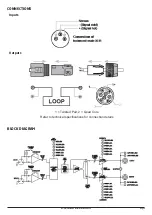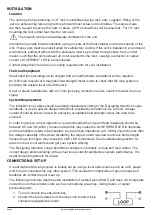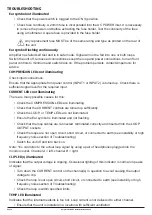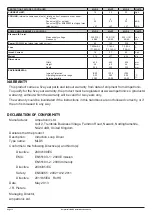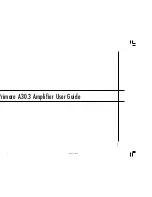
INSTALLATION
Location
The unit may be free standing or 19” rack mountable using the rack ‘ears’ supplied. Fitting of the
‘ears’ is achieved by removing the three forward most screws on both sides. The same screws
are then re-used to secure the ‘ears’ in place. (A PH2 screwdriver will be required). For 19” rack
mounting the four rubber feet must be removed.
The location must provide adequate ventilation for the unit.
Internal fans provide forced ventilation using air vents at the front (intake) and rear (exhaust) of the
unit. These vents must be unobstructed for satisfactory cooling. If the unit is installed in an enclosed
environment, sufficient airflow into the enclosure must be provided through vents, fans or other
means, such that the units exhaust air is not recycled to the inlet - causing a reduction in output
current or OVERHEAT LED to be illuminated.
Contact Ampetronic for advice on cooling requirements for your installation.
Tools and Equipment
Small hand tools including a wire stripper and a small flat blade screwdriver will be required.
An ILR3 loop receiver or a magnetic field strength meter is vital to check that the loop system is
providing the desired level of performance.
A pair of stereo headphones with a 3.5mm jack plug connection is also useful to monitor the loop
signal.
System Requirements
The induction loop cables should be already installed according to the ‘Designing Induction Loops’
handbook, or as per specific design instructions provided by Ampetronic. As a result, a target
current should be known, based on achieving acceptable field strength across the area to be
covered.
In order to achieve correct operation it is recommended the loop and feed resistance should be
between 0.5 and 3Ω (at DC). Values outside this may cause the LOOP ERROR LED to illuminate
and the amplifiers output to be disabled. Loop and feed impedance (at 1.6KHz) should be less than
the voltage capability of the driver divided by the target current required to achieve field strength.
Values above this figure may cause the CLIP LED to illuminate. See troubleshooting section for
advice on how to correct this and get your system working.
The ‘Designing Induction Loops’ handbook contains more details on loop and feed cables. The
correct design and positioning of the actual loop is vital for satisfactory system performance. If in
doubt consult Ampetronic for advice.
CONNECTION & SET-UP
It is advised that the loop system is initially set up using a local audio source such as a CD player,
which is not connected into any other system. This avoids the complication of ground loops and
feedback etc, whilst the unit is set up.
The following procedure describes the installation of a stand-alone MLD5, and does not incorporate
connection of other ancillary units such as microphone pre-amps, mixing desks, or signal
processing units.
1. Turn all controls fully anti-clockwise.
2. Connect the feed cables from the loops into the NL4 loop
connectors supplied as shown:
Ampetronic MLD5 Installation Handbook
Page 4





